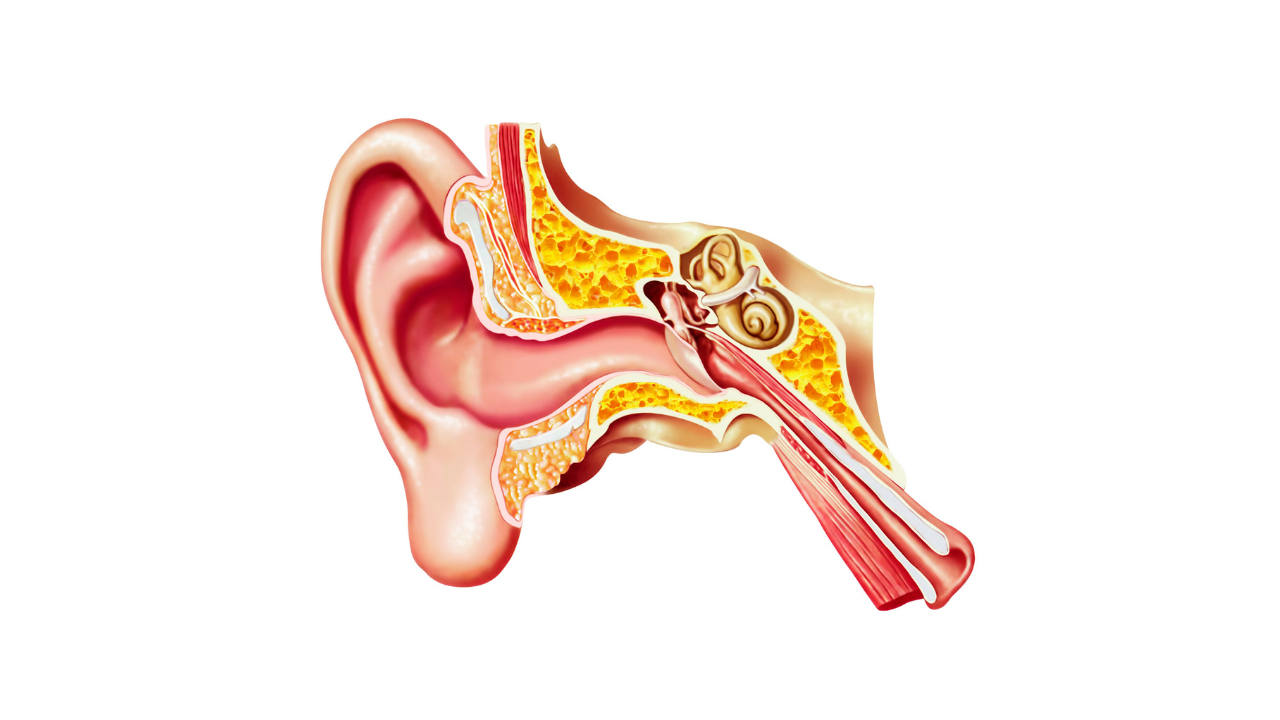Noise Trains Your Nerves to Overreact

Your Ears Decide When You Feel Safe
Most people think of hearing as passive — something that happens to us.
But your ears are doing more than collecting sound.
They’re running constant threat analysis.
Every second, your brainstem is asking a quiet question:
Am I safe or not?
If the answer is “safe,” your body releases tension.
If it’s “not safe,” even for a split second, your pulse tightens, your jaw stiffens, and your attention narrows.
You might not notice it, but your entire nervous system pivots.
And here’s the key point: your ears, not your thoughts, make that call first.

The Auditory Gatekeeper of Safety
Deep in the brainstem sits a network called the auditory-vagal reflex pathway.
It links the inner ear, the vagus nerve, and the facial muscles that help shape your voice and regulate heart rate.
In Polyvagal Theory, Stephen Porges calls this pathway the ventral vagal complex, a system that helps us feel calm, connected, and capable of healing.
When your ears detect familiar, mid-range human tones — gentle speech or music — that pathway signals: You’re safe. You can relax now.
When your ears register harsh, high-frequency, or unpredictable sounds, the message reverses. Your sympathetic system gears up for survival. Heart rate rises. Digestion slows.
The body moves into alert mode before you even notice.
It’s an automatic response.You can’t simply think your way out of it, but you can teach your body to respond differently.
How Sound Changes the Heart
Researchers studying how sound affects the vagus nerve have found that soothing, steady, low tones can boost heart rate variability (HRV) in just a few minutes.
HRV is the subtle rhythm between heartbeats that reflects vagal tone:
higher HRV means greater flexibility and stress resilience.
Studies indicate that complex or irregular auditory rhythms (versus simple, predictable ones) are associated with reduced HRV — a core marker of vagal tone — suggesting that unpredictable sound may shift the nervous system toward a higher-arousal state.
In essence, sound was teaching the heart to calm down. This explains why we instinctively play quiet music when we’re upset, or soften our voice to comfort someone.
Even environments full of mechanical noise can leave us edgy without knowing why.
Your ears do more than hear. They’re always helping your body prepare for what’s about to happen. The Cost of a Noisy Life
The Cost of a Noisy Life
Modern environments bombard us with unpredictable sound.
Refrigerators hum unevenly.
Phones chirp.
Sirens echo through glass.
Each micro-disturbance tells the brain, Stay alert.
The nervous system adapts, but at a price:
chronic low-level vigilance dulls HRV, disrupts sleep, and keeps the vagus nerve from completing its relaxation loop.
Over time, this low-level overactivation can lead to fatigue, anxiety, and signs of inflammation in the body. The problem isn’t the noise itself. It’s that your system can’t predict what’s coming next.
The vagus thrives on rhythm.
Irregular sound creates uncertainty, and uncertainty tells the body to brace. This is why silence feels restorative only once your system believes it’s safe enough to drop its guard.
 How the Ear Talks to the Heart
How the Ear Talks to the Heart
Here’s what happens beneath awareness:
-
Sound enters the ear canal and vibrates the eardrum.
-
The vibration travels through the middle-ear bones, especially the stapedius muscle, controlled by the vagus.
-
The vagus sends those mechanical signals to the brainstem.
-
The brainstem adjusts the balance between sympathetic and parasympathetic output.
-
Your heart rhythm, breath rate, and muscle tone change in real time based on what you hear.
That’s why a calm, resonant voice can bring someone down from panic faster than reason ever could.
The voice acts as a vagal pacemaker.
The Three-Day Sound Scan
You can start retraining this pathway today.
All you need are awareness, consistency, and curiosity.
Day 1: Notice
Throughout the day, notice which sounds make your body tense and which soften it.
-
The beeping microwave
-
A coworker’s tone
-
Wind through a window
-
Your own rushed voice
Ask: Where do I feel this in my body?
You’re training interoception — sensing inner change.
Day 2: Modify
When a sound spikes tension, change the auditory input.
-
Lower the volume
-
Add a steady rhythm (soft drum, gentle instrumental)
-
Hum under your breath for 30 seconds
Watch how quickly your body recalibrates.
Day 3: Design
Choose one space — your desk, kitchen, or bedtime zone — and design it for sound safety.
-
Swap harsh alarms for low chimes
-
Play steady, warm background sounds
-
Speak slowly and at a lower pitch when you want cooperation or calm
You’re building a predictable sonic landscape where the vagus nerve can rest. Within a week, people often notice improved focus, easier wind-down, and fewer tension headaches.
Living by the Sound of Safety
Once you begin to listen this way, life changes.
A waiting room becomes a micro-lesson in regulation.
Is the music sterile or warm?
Are voices sharp or steady?
Think about how your voice changes when you’re talking with someone you love.
A slower, softer tone helps your whole system relax.
Even the way you use your phone changes.
A quick voice message can send warmth and calm in a way words on a screen never do.
That’s social vagal tone in action:
one person’s voice reorganizing another person’s body state.
People have known this for generations. We sing lullabies to calm babies, chant to ease our nerves, and turn to song when we’re grieving.
Now neuroscience simply explains the ancient wisdom.
What Changes When You Listen Differently
When your auditory system becomes more discerning, so does your emotional life.
You begin to notice how sound mirrors relationship dynamics.
Some voices steady you. Others constrict you.
Instead of labeling people as “draining” or “calming,” you start recognizing nervous-system compatibility. Your ears learn who helps your body stay regulated.
Awareness naturally grows into empathy.
When someone’s voice sounds tight, it may simply mean their body doesn’t feel safe yet.
Meeting that sound with steadiness instead of irritation can shift both systems at once.
That’s co-regulation by frequency.
Closing Reflection
You can’t silence the world, but you can choose what your body takes seriously.
Start with your own sound.
Hum for a minute before your first conversation.
Speak at a pace your breath can sustain.
Let warmth replace rush.
Your ears will recognize it.
Your heart will follow.
All the best, Jim
Sources:(Silva, B. C. S., Costa, L. M., Souza, V. H. R., & Rodrigues, A. C. S. (2024))
The material provided on this site is for educational purposes only and any recommendations are not intended to replace the advice of your physician. You are encouraged to seek advice from a competent medical professional regarding the applicability of any recommendations with regard to your symptoms or condition.
Copyright © 2025 by Blue Beat Media. Thank you for your interest in Jim Donovan. We do not allow republication of our full newsletters and articles. However, you can post a portion (no more than 90 words, 1-2 paragraphs) of our content with a live link back to our homepage, donovanhealth.com, or a link to the specific article you are quoting from.



